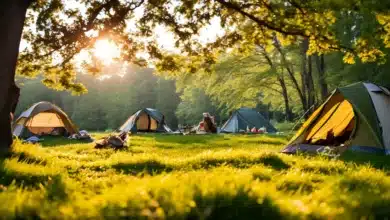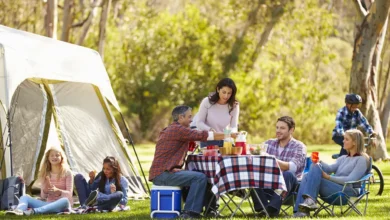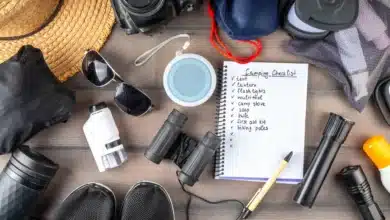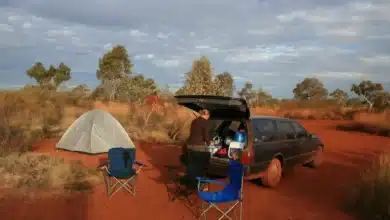I was 19 when I went camping for the first time. Thom brought me along on my first camping trip with his family. I was nervous because I did not know what to expect.
This is a common feeling among first-timers, and a Camping Guide for non-campers can be very helpful. I didn’t know where we were going to go, how long we would stay there, what I needed to bring or what we would be doing.
It was so much fun and much less scary than I had imagined. I enjoyed my first trip with Thom’s family.
Since then, Thom, my husband, and I have spent at least one weekend every summer with friends and family at the river to relax, unwind and enjoy the sunshine.
We go camping with Dad and my uncle quite often, but we’ve never done it as a whole family. Laura and Mum had also never been! We went camping as a family for the first time over the weekend to introduce Laura, Sophie and Mum to camping.
It had been almost eight years since I first went camping. I couldn’t stop thinking about it when I helped Mum prepare for her first trip. If you have never been camping, it can seem as if it is a completely different experience. But once you start going, you will see that it’s not scary at all and that it can be great fun.
If you are planning your first camping adventure, this guide will help make the planning and trip a lot easier.
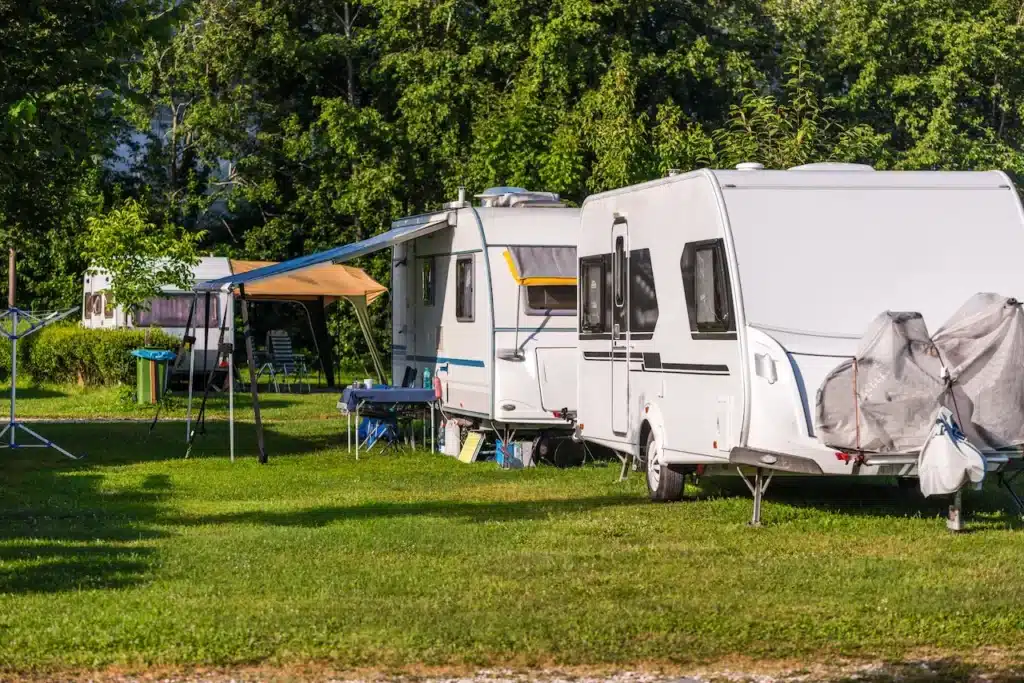
Why Go Camping?
Camping is a great alternative to staying in hotels.
- You spend the day and night outdoors, enjoying the sun and only coming inside to sleep.
- This is a total technology detox. It’s the perfect time to ditch your laptop and phone in remote areas of Australia.
- It’s a great way to experience and see things that you wouldn’t get to see or do if you were in a city or caravan park. A kangaroo and a baby joey came through our campsite on the weekend looking for food!
- Spend some quality time with family and friends.
- You can see parts of Australia you would not otherwise have the opportunity to visit.
Where to Camp?
Some people decide to camp because they are going somewhere, while others go camping first and think about their destination afterwards. You might choose where to camp based on the time of year and what activities you would like to do. Spend some time researching where you plan to camp so that you know what to pack and how to prepare.
Camping is great in the summer because the weather is hot and sunny, and you can camp outside all day long without feeling cold. We usually go to Yarrawonga, on the Murray River. This river is the border between Victoria and New South Wales.
Yarrawonga, located only 3 1/2 hours from Melbourne, is a great place to escape to, even if you have only a few days to spare. The weather is sunny and perfect for the majority of the year.
Research Before You Go Camping
Once you have decided on where to camp, do some extra research about the area. You should find out the following:
- What are the facilities available?
- You may need to get a fishing, camping or driving permit.
- You can drive your car up to the campsite, but you will need to walk.
- Is it necessary to book a campsite in advance, even if the site is free or located in a remote location? This is important information to know if you are camping in National Parks.
When to Take a Camping Trip?
It depends on when and where you visit Australia. Australia is an enormous country, and the weather varies between the states and territories as well as in the northern and southern parts. The northern part of Australia has a more tropical climate, with rainy and dry seasons. While the southern part is more typical of summer and winter.
Avoid peak times like school and public holidays if you can. It can take hours to find a place to camp during these times. You’ll also be surrounded by families with children and noisy people. Not very relaxing…
The choice you make will likely be based on the purpose of your camping trip. Camping in the summer is my favourite time to go. You can stay outside all night and not get cold, and you spend most of your day running around in and out of water.
There are Many Different Types of Camping
There are many different camping experiences you can have in Australia.
Bush camping can be free, and it allows you to experience nature up close. Camping in the bush can be free, but you will have to rough it because there are no facilities. You can find campsites that are completely untouched by other people if you’re lucky.
Beach Camping has become very popular in Australia. There are so many beautiful beaches to choose from. Camping is only allowed on a few Australian beaches. Most of the time, camping means camping in a campground or grass area right next to a beach. Some will include facilities, while others may only be grass sites with no facilities. Take note of any signs that are posted around the beaches in Australia.
National Parks are home to some of Australia’s most stunning and remote attractions. National Parks allow camping near the highlights of the park, like waterholes and waterfalls. They also have facilities such as toilets and running water. Some larger sites may even offer shower blocks.
These are usually in prime locations for visiting beautiful waterfalls, breathtaking attractions, and majestic mountain ranges. Camping in National Parks is generally between $5 and $10 per night. You can deposit the money in a box on the campsite to be collected by the ranger.
Hiking and camping occur in National Parks when people decide to take a long trek or hike and camp along the way. Doing a lot of research on camping in this manner before you go is advisable, especially with the National Parks websites of your state, to ensure you do not need permits or passes. Also, make sure that camping is allowed at all places along your journey.
There are many options for Caravan Park camping in Australia. These parks can range from budget to luxury. The parks offer a range of facilities including toilets, showers and washing machines. They may also have playgrounds, swimming pools and themed entertainment nights. The price ranges from $15 to 35 AUD for a grassy site without power. However, they are often located in spectacular locations, as next to stunning waterfalls and beaches.
This article will focus on bush camping during the hot summer in Australia. You should do some research if you plan to camp in colder weather.

Packing for a Camping Trip
The camping equipment you will need depends on the location. If you are camping at a beach or caravan park that has cooking facilities, you don’t need to bring everything to cook. If you are travelling in colder weather, you will need more thermals and fewer bathers or shorts. This is what we take when we go camping in the summer in the wilderness with no facilities.
Remember these Essentials
A sleeping mat, or foam mattress or a doona.
For Your Campsite: chairs, table for food preparation, lights (we love festoon lighting to make it look adorable and provide a lot more light), torches, gazebos to offer shade, matches, lighters, garbage bags, toilet paper, toilet situation, etc.
Supplies for the kitchen – cooking equipment such as tongs or a spatula, and cleaning supplies after cooking.
To survive, you should always use insect repellent and sunscreen. If you don’t have enough protection, it is a good idea to carry sting/bite and aftersun creams, along with a small emergency first aid kit.
What You Should Eat
It’s easiest for me to keep my eating habits similar to what I do at home while I am camping. This way, I feel less hungry and I don’t overeat unhealthy meals or snacks. My body also feels better.
Basics –you will need an esky or fridge to keep your meats, fruits, salads and drinks cool. You will need water to drink if you are camping in the wilderness. You can always grab a slab of water from the supermarket for less than $10. You can also buy a large 20l water container that has a faucet to reuse and refill water bottles.
Food – depends on you, your food preferences and dietary needs. We bring fresh fruit, such as grapes, strawberries, and watermelon, along with carrots and hummus for snacking, and wholegrain bread, spreads and hummus for a quick lunch.
Basic condiments – salt, pepper, oil for cooking, all seasonings, tea, coffee, Milo, sugar sauce, Nutella and peanut butter.
Packing Clothes for a Camping Excursion
You should avoid bringing anything that you would be embarrassed to see dirty or love.
It’s going to be hot, so wear whatever is comfortable. You’ll need a hat that will protect you from the sun, and spare undies and socks.
If you plan to swim in rivers, bring only BLACK swimming gear. The water may be clean and leave you feeling refreshed, but it can stain white or lighter colored clothing. After ruining two pairs of my favourite bathing suits, I learned to only wear black clothes and bathing suits in the river. Don’t forget a towel for drying off.
Bring trackpants, a jumper and something warm to sleep in for the nighttime. It can get cold in the bush at night. I always bring UGG boots to sleep in at night. They keep my feet free of dirt and help me feel cleaner.
First Time Camping? Here are Some Tips to help you get started.
Before you go, it’s a good idea to test out all the equipment you are taking. It’s important to test everything you have before leaving on your first trip. This includes setting up your tent and trying out the gas stoves and lights. You can also pump up your air mattresses and floaties, and pull out your tables and chairs. It’s a terrible feeling to arrive at your campsite only to find that the equipment you brought doesn’t work or is broken. This is especially true if you are in an area where you can’t easily get more supplies.
Camping with dogs – This will depend on your destination. In Victoria, you can take your dog camping along the Murray River, but many other places, such as beach camps, National Parks, and caravan parks, have stricter rules. Take your dog camping with you and make sure you bring a leash, their favourite toy or bed from home, as well as their water bowl.
Keep an eye on your children while camping to ensure they do not wander away. This is especially important if you are in Australia, where there are many poisonous or dangerous creepy crawlies, such as spiders and snakes.
When temperatures are high, make sure that they stay hydrated by drinking enough water. Also, encourage them to take a dip to cool off! Remember that, even though you may love your pet dog, other campers will probably not be happy to see it running around and jumping on their tents.
You should keep a close watch on them so that they do not run up and bother other campers and, more importantly, they do not get lost.
Fire safety –Camping during summer can be accompanied by high temperatures. A fire ban in Australia means that you cannot light any fires, including campfires, BBQS and gas cookers. A fire can cause deadly bushfires and is extremely dangerous. Keep up to date with the fire alerts in the area where you are camping.
First aid –Nobody likes to consider the possibility of something going wrong in the bush, but it can happen. Always travel with a basic first-aid kit that includes the essentials you may need in an accident. Bandages, bite-and-sting cream, and sunburn aftersun lotion are all essentials.
Minimise your Impact. There is nothing worse than returning from a camping weekend with ten bags full of trash. Consider what you are using and how to dispose of it. Throw anything that can be burnt in the fire – paper towels, food scraps, paper cups and plates – in there. The paper will burn in just a few moments, reducing the amount of trash you need to carry with you.
Showers – If you are camping in the wilderness, there will be no showers and no facilities. If I’m going to be camping for more than a few nights, I will need a proper shower. A river shower is not enough to get my hair clean. If you ask nicely, most caravan parks will allow you to take a shower with hot water and use the facilities at their park for $5AUD. There’s nothing better than feeling clean and fresh again!
The Situation – It’s all up to you. You can find a variety of toilet options at your local camping shop. Chemical toilets are not my favourite. I don’t want to have to clean them up later. For privacy, we dig a large hole and place a toilet seat on top. When we leave, we cover the hole and take all of our belongings with us.
You can choose where you want to go, but I would suggest that you don’t use the toilet at the same place each time. Instead, leave some toilet paper under a new tree. Although the toilet paper is likely to break down, it still looks bad and is gross. Especially if another person wants to camp in that spot after you.
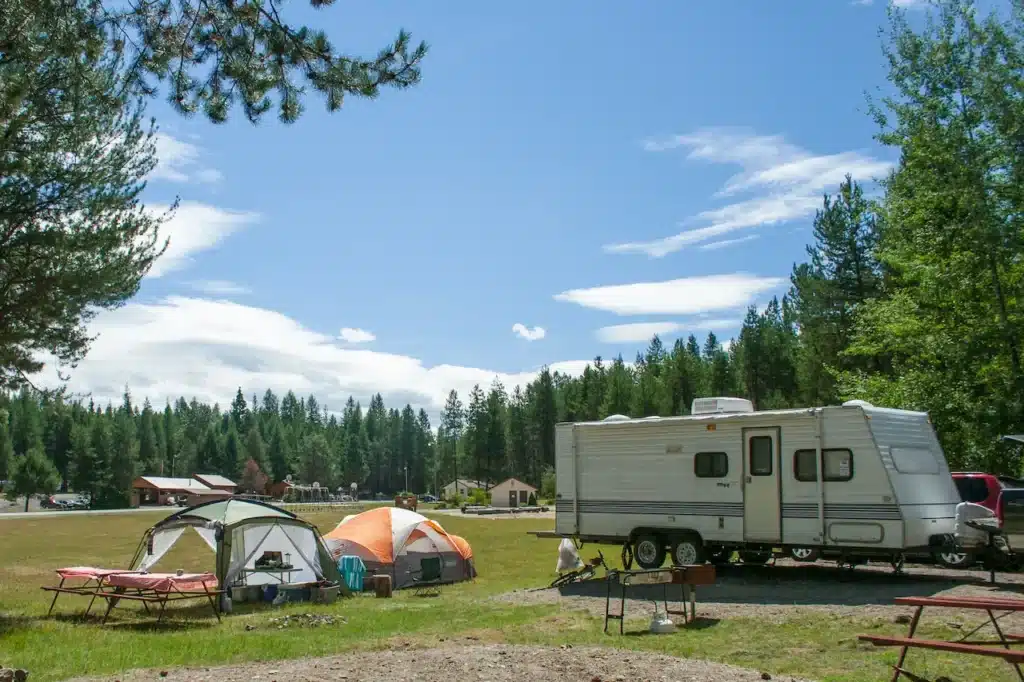
Leave Your Campsite the Way You Found It
It’s important to leave the campsite in its original state, even if it is in the National Park or on the beach.
Take all the rubbish you can.
It’s not your job to clean up the bush. Not only can it be harmful to the environment, but it could also pose a threat to wildlife that might try to eat or get caught in the rubbish.
It should be the same as when you first arrived.
